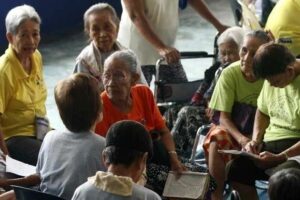ASIA-PACIFIC countries with younger populations like the Philippines are projected to experience rapid demographic changes by 2050 amid declining fertility and longer lifespans, the Asian Development Bank (ADB) said.
“Asia and the Pacific’s rapid development is a success story, but it’s also fueling a huge demographic shift, and the pressure is rising,” ADB Chief Economist Albert F. Park said in a statement.
In developing Asia, individuals aged 60 and above are expected to double to 1.2 billion by 2050, noting that regional economies with younger populations are expected to experience “dramatic shifts” in its population age structure.
“In Cambodia, the Philippines, and Uzbekistan, fertility rates are currently high at 2.3–2.8 live births per woman, but will fall by 2050,” the ADB said in its “Aging Well in Asia” report.
Citing its Asian Development Review, the ADB said the young population’s contribution to Philippine growth is projected to slow to 0.231 percentage points (ppts) between 2031 and 2040, from 0.481 ppts during the 2021-2030 period.
That growth rate would put the Philippines behind Pakistan (0.538), Malaysia (0.284), Vietnam (0.282), and ahead of India (0.219), Indonesia (0.170), Hong Kong (0.066) and Singapore (0.046).
Between 2021 and 2030, young Filipinos’ economic contribution are expected to outperform the rest of developing Asia.
Older people in the Philippines, Thailand, and Vietnam who are living alone have increased by 40-90% in the last two decades, the ADB said.
“The conventional wisdom that the demographic tailwinds that helped propel developing Asia’s past economic growth will turn into demographic headwinds in the coming decades,” according to the report.
The ADB called on the need to prioritize older Asians’ health to increase their capacity to work and contribute to economic growth.
In developing Asia, the Philippines ranked third highest (37.7%) in terms of having older people with unmet healthcare needs, behind Indonesia (43.7%), Bangladesh (43.5%).
Around 40% of older people in the poorest quintile also reported that they did not use healthcare in the past year. Only 19% of older Filipinos said their health was excellent. — Beatriz Marie D. Cruz
